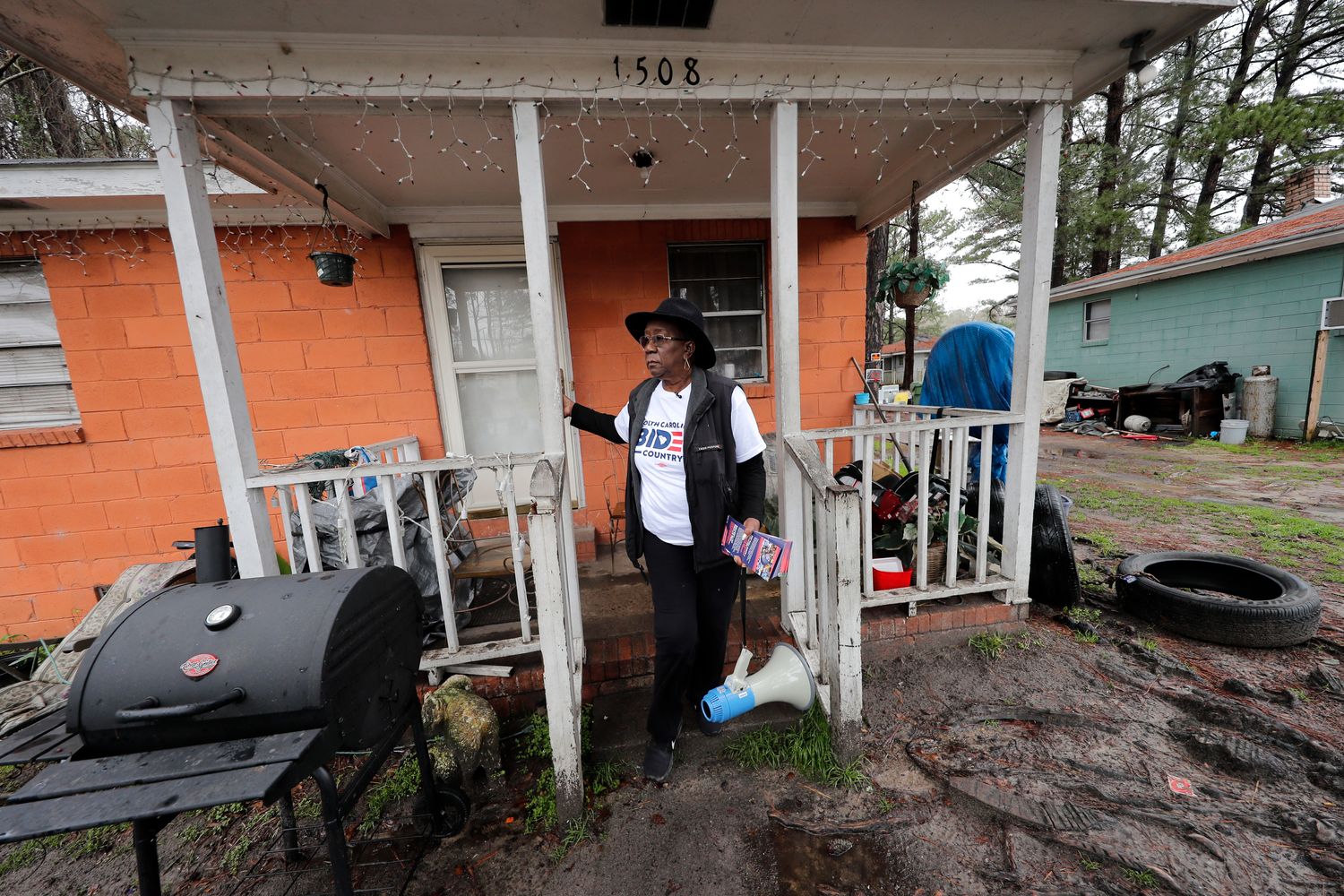
“It’s a challenge to figure out the best and safest way that protects campaign staffers and volunteer supporters, but also the voters who we interact with,” said Mike McLaughlin, a Democratic adviser who served as Amy Klobuchar’s national field director.
Democrats’ restraint reflects the differing ways the presidential campaigns and their supporters have approached this stage of the Covid-19 crisis — a time when several states including Florida, Arizona, Georgia and North Carolina have seen an uptick in cases. Biden, who is pitching an eight-point plan to reopen the economy, is giving speeches geared to TV audiences and organizing in-person events with a few masked participants. Trump is betting that a resurgent, reopened economy will help lift him in the fall, and he’s set to resume the massive rallies that have been a fixture for him since 2016.
When the pandemic hit, campaigns were forced to quickly adapt to the new environment by expanding their digital canvassing operations — a mix of texts, calls, apps, email, web conferences and social media. But the push to return to face-to-face organizing, which also is happening in House and Senate campaigns, speaks to its enduring effectiveness.
“When you rank the field tactics, you’ll see that the ones that campaigns invest most heavily in are the ones that involve real, live person-to-person conversation,“ said Kunoor Ojha, the states organizing director for Elizabeth Warren’s presidential campaign. “If in the future that becomes something we do again — I would encourage them to layer doors with the other remote tactics, like texting and relational organizing, that they should be mastering in the meantime.”
Republican National Committee officials stressed that they aren’t in a rush to start door knocking again and waited for guidance from states that they could resume. This includes limiting the number of people in local offices and practicing social distancing among their roughly 1,100 field staffers and state leadership teams.
“We were extremely effective in the virtual months focusing on phone calls and virtual volunteer training,” said Mike Reed, an RNC spokesman. But, he added, “of course it is great to get back to in-person field organizing as well.”
Biden’s campaign is working to catch up. Over the past month, officials merged their field and organizing efforts with the DNC to reach a total of 600 staffers. In Wisconsin and Michigan, digital directors are helping bridge the gap between traditional field and online organizing; Democrats have also set aside considerable staff time to help voters navigate the various vote-by-mail processes in the states.
“We’re working deliberately to determine how much they can get done in this virtual world — what the metrics look like — and will continue building out the team,” said Jenn Ridder, Biden’s national states director.
Biden’s team is racing to install state directors in the coming weeks, announcing Friday that Jessica Mejía will lead the campaign in Arizona, where Andrew Piatt was brought on as a senior adviser.
Some of the new talent is flowing from Organizing Together 2020, an outside group formed earlier this year to focus on building infrastructure in six battleground states. The organization is winding down its operations with a planned last day of June 30, officials there confirmed.
Organizing Together was intended to give the eventual Democratic nominee a boost. In the spring, it recruited and mobilized tens of thousands of volunteers, logged millions of calls and texts and launched vote-by-mail and voter registration programs in the battlegrounds with virtual training sessions and events.
Biden aides are looking at bringing in some Organizing Together state leaders to join their state leadership and organizing teams, though it’s unclear how much of the group can be subsumed.
“The work that Organizing Together 2020 has been leading to build the battleground capacity to mobilize volunteers has been a success and we are encouraged at how this infrastructure is being utilized to help Joe Biden get elected this fall,” National Education Association President Lily Eskelsen García, one of the national co-chairs, told POLITICO.
The pandemic challenged down-ballot candidates to adjust to the new virtual landscape and promote various approaches. In Georgia, Democrat Carolyn Bourdeaux’s House campaign credited their newly configured organizing efforts with helping win an outright majority and avoiding a runoff in a six-candidate field. Shelbi Dantic, Bourdeaux’s campaign manager, pointed to their dozen full-time field staff and scores of interns who are helping remotely. They worked from a “virtual field office” while the candidate relied on weekly virtual town halls.
Biden’s campaign initially kept things community focused, centering its efforts around checking in on supporters.
Aides are now working on adding new features to their app to give users more ways to reach out to friends and post online. And they are honing in on their approach to so-called relational organizing, a tactic many of the presidential candidates tried in the primary that relies on supporters reaching out to people they know rather than hitting up strangers.
“The key to this election is that we have to be flexible,” Ridder said of the uncertainty. “We have to be both virtual and move to the ground if that’s a possibility.”
Source: politico.com
See more here: news365.stream






